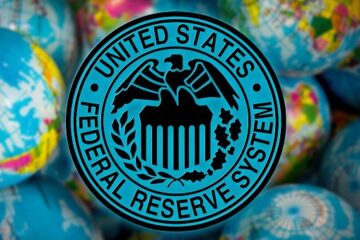This past week, the pinnacle of Elon Musk’s Tesla (TSLA) technologies took center stage. Meanwhile, analysts continued to react to Stellantis’s (STLA) actions following a disappointing earnings call.
Related: Tesla has a problem attracting ‘normal’ EV buyers to its cars
Don’t Try This at Home
This quote by Elon Musk may come back to haunt him.
“I would encourage anyone to understand the system better to simply try it out, let the car drive you around. Once people use it, they tend to continue using it. So it’s vastly compelling.”
Truist Securities Analyst William Stein took him up on that offer and tried Full Self-Driving for himself.
In a note published on Monday, he wrote that he tried the software’s special “Demo” mode, which made a number of illegal and dangerous moves that “would have surely caused an accident.”
During his drive, “the Model Y accelerated through an intersection as the car in front of us had only partly completed a right-turn. My quick intervention was absolutely required to avoid an otherwise certain accident.”
“Another intervention was required when a police officer used hand motions to signal us to pull to the side of the road to allow a funeral procession to pass.”
He concluded that compared to a prior experience in April 2024, this FSD run was “no better, arguably worse, than last time.”
Stein’s “Hold” rating for Tesla stock remains unchanged.
Elon Musk, chief executive officer of Tesla Inc., during a joint meeting of Congress with Israeli Prime Minister Benjamin Netanyahu at the US Capitol in Washington, DC, US, on Wednesday, July 24, 2024.
Some analysts are still believers in Musk, Tesla stock
Despite the revelation documented by Stein, other analysts still carried optimistic views regarding Tesla stock.
On July 29, analysts, including Adam Jonas at Morgan Stanley, named Tesla their new “Top Pick” in U.S. auto stocks, replacing Ford (F) .
Related: Tesla has a problem attracting ‘normal’ EV buyers to its cars
While the Tesla bull noted that it is shifting resources away from its EVs and that Ford spent significantly more time discussing its EV business during its Q2 2024 earnings call, Tesla is in an interesting position as legacy automakers like Ford fall back on their electrification timelines.
“[Tesla] may achieve an even more dominant position in the market for highly lucrative ZEV credits going forward.”
Additionally, he noted that the near-term expectations around Tesla’s autonomy plans, such as Full Self-Driving and the robotaxi, “may be too high.”
Morgan Stanley kept its overweight rating for Tesla.
While Morgan Stanley analysts maintain their modest opinions, analysts at Piper Sandler say that Musk and his EV firm “may have solved the Self-Driving puzzle.”
In a note published on July 29, it urged readers, “Don’t roll your eyes. Buy $TSLA,” adding that the company’s failed promises should not be an excuse for people to lose interest.
“Investors have grown accustomed to ignoring Tesla’s hyperbole about Full Self-Driving. However, judging by reviews on X, Tesla’s update to version 12.5 is ‘revolutionary, ‘” they said.
“We think investors should consider the possibility that Tesla’s decision to host a Robotaxi event isn’t a ploy to distract from falling EV sales.”
Not-so-stellar Stellantis
Aside from Tesla, analysts’ attention over the past week focused on the 14-brand multinational auto giant Stellantis.
Related: Stellantis threatens layoffs amid poor earnings
During its earnings call on July 25, the company behind brands like Jeep, Ram Trucks, Dodge, and Fiat reported dismal results, which it attributed to a number of factors, including some issues attributed to operations in North America.
In Q2, Stellantis’ revenue tumbled 17% year over year to $46.4 billion, while earnings sagged 36% to $1.26 per share.
On July 29, Deutsche Bank analyst Tim Rokossa downgraded Stellantis stock from a “Buy” to “Hold” rating, noting that the group’s stock was worth buying “due to the valuation, focus on shareholder returns, and, above all, the strong investor confidence in STLA’s execution, which managed the volatility of the automotive cycle better than competitors.”
Additionally, Rokossa noted that “confidence in the ability to control costs and other key performance indicators was very strong.”
More Automotive:
Hyundai pressured dealers to play dirty sales trick, lawsuit allegesFord CEO sends a stern warning for American car buyersAnalysts have a bleak outlook for car dealers after CDK cyberattack
On July 30, Stellantis notified employees that it would be offering a voluntary buyout package to its salaried US-based workforce in an effort to reduce costs and boost profits. Additionally, it warned employees that if not enough people take their offer, “involuntary terminations” (layoffs) could follow.
On the same day, Citi analyst Harald Hendrikse maintained his “Hold” rating after the “weak” first half of 2024 earnings. He noted that any chance of recovery for the multinational auto giant won’t be coming soon, likely into 2025.
On the flip side, analysts from Nomura upgraded Stellantis stock from a Neutral rating to “Buy” on July 31.
In a note, analyst Anindya Das noted that some investors might be hyper-fixated on Stellantis’ aging lineup and high inventory in North America but remained confident that management was on its way to getting the company on the up-and-up.
“We take a positive view of company management’s acknowledgment of the issues affecting Stellantis’ North America business and showing resolve to address those challenges.”
Related: Veteran fund manager picks favorite stocks for 2024


